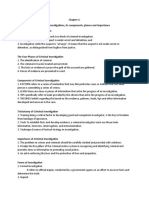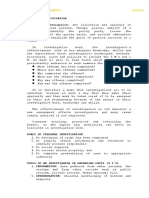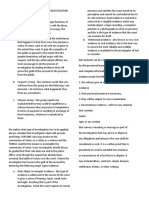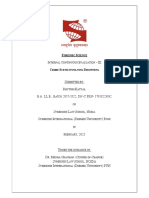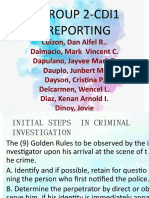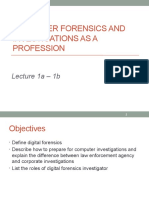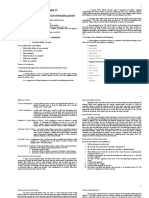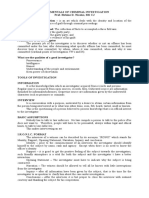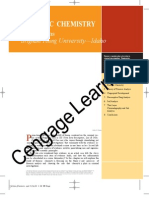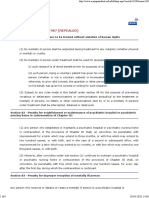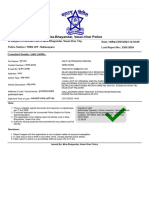0% found this document useful (0 votes)
128 views7 pagesCDI2MODULE
This document discusses methods of theft and forced entry. It describes how thieves select entry points based on visibility and resistance. Common entry methods include using tools to pry open doors and windows or break glass. Upon entering, thieves search quickly or thoroughly depending on experience. Evidence like tool marks, paint chips, glass fragments, soil, fingerprints can be left behind and help identify suspects. Recovered stolen goods may indicate the thief's methods and connections to fences who buy goods illegally.
Uploaded by
Peach MaulionCopyright
© © All Rights Reserved
We take content rights seriously. If you suspect this is your content, claim it here.
Available Formats
Download as DOCX, PDF, TXT or read online on Scribd
0% found this document useful (0 votes)
128 views7 pagesCDI2MODULE
This document discusses methods of theft and forced entry. It describes how thieves select entry points based on visibility and resistance. Common entry methods include using tools to pry open doors and windows or break glass. Upon entering, thieves search quickly or thoroughly depending on experience. Evidence like tool marks, paint chips, glass fragments, soil, fingerprints can be left behind and help identify suspects. Recovered stolen goods may indicate the thief's methods and connections to fences who buy goods illegally.
Uploaded by
Peach MaulionCopyright
© © All Rights Reserved
We take content rights seriously. If you suspect this is your content, claim it here.
Available Formats
Download as DOCX, PDF, TXT or read online on Scribd
/ 7


